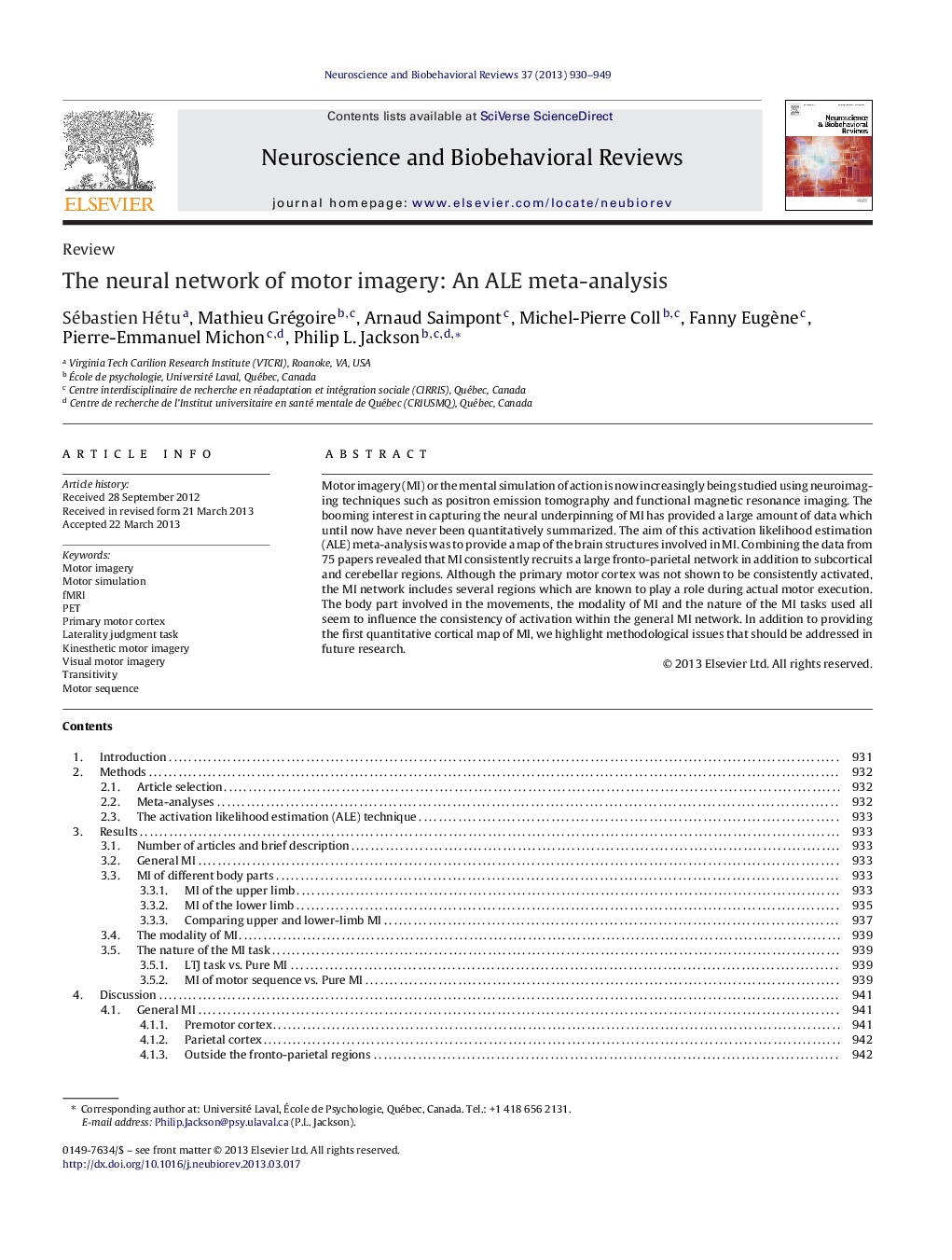| Article ID | Journal | Published Year | Pages | File Type |
|---|---|---|---|---|
| 938023 | Neuroscience & Biobehavioral Reviews | 2013 | 20 Pages |
•Motor imagery activates fronto-parietal, subcortical and cerebellar regions.•The motor imagery network includes regions involved during actual motor execution.•The primary motor cortex is not consistently activated during motor imagery.•Consistency of activations is modulated by the type of movements.•Consistency of activations is modulated by the nature of the motor imagery task.
Motor imagery (MI) or the mental simulation of action is now increasingly being studied using neuroimaging techniques such as positron emission tomography and functional magnetic resonance imaging. The booming interest in capturing the neural underpinning of MI has provided a large amount of data which until now have never been quantitatively summarized. The aim of this activation likelihood estimation (ALE) meta-analysis was to provide a map of the brain structures involved in MI. Combining the data from 75 papers revealed that MI consistently recruits a large fronto-parietal network in addition to subcortical and cerebellar regions. Although the primary motor cortex was not shown to be consistently activated, the MI network includes several regions which are known to play a role during actual motor execution. The body part involved in the movements, the modality of MI and the nature of the MI tasks used all seem to influence the consistency of activation within the general MI network. In addition to providing the first quantitative cortical map of MI, we highlight methodological issues that should be addressed in future research.
